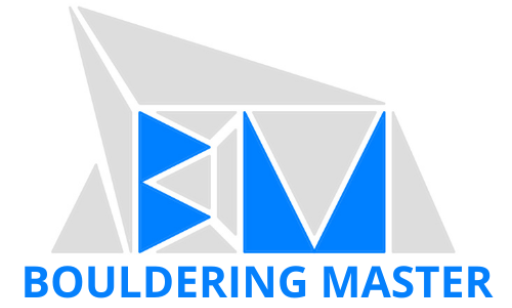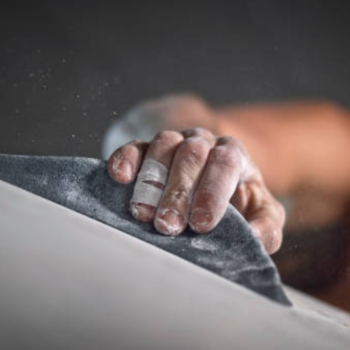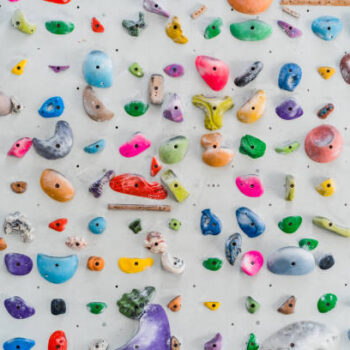Mastering Basic Rock Climbing Footwork: Climb Smart, Step Strong
Table of Contents
Rock climbing requires a combination of strength, strategy, and technique. There are various techniques that a climber needs to master, developing basic rock climbing footwork is one of those vital necessities to be able to climb more efficiently and effectivley.
While many beginner climbers look up to grab with their hands, they often forget about their feet. Think with your feet, not your hands. Developing good rock climbing footwork can take a lot of strain off your arms and make climbing much easier.
In this article, we’ll delve into the basic rock climbing footwork techniques for beginner climbers by providing insights into their applications and how to execute them with precision.
What are the basic rock climbing footwork techniques that will improve climbing technique and efficiency?
Basic footwork for rock climbing includes mastering these 4 techniques: Edging, Smearing, Toe Hook, and Heel Hook. Developing the correct footwork and optimal use of your feet, not only will save you a lot of energy while mastering climbing routes, but also enhance your ability to problem solve.
Remember being a better climber – regardless of strength – comes from footwork.
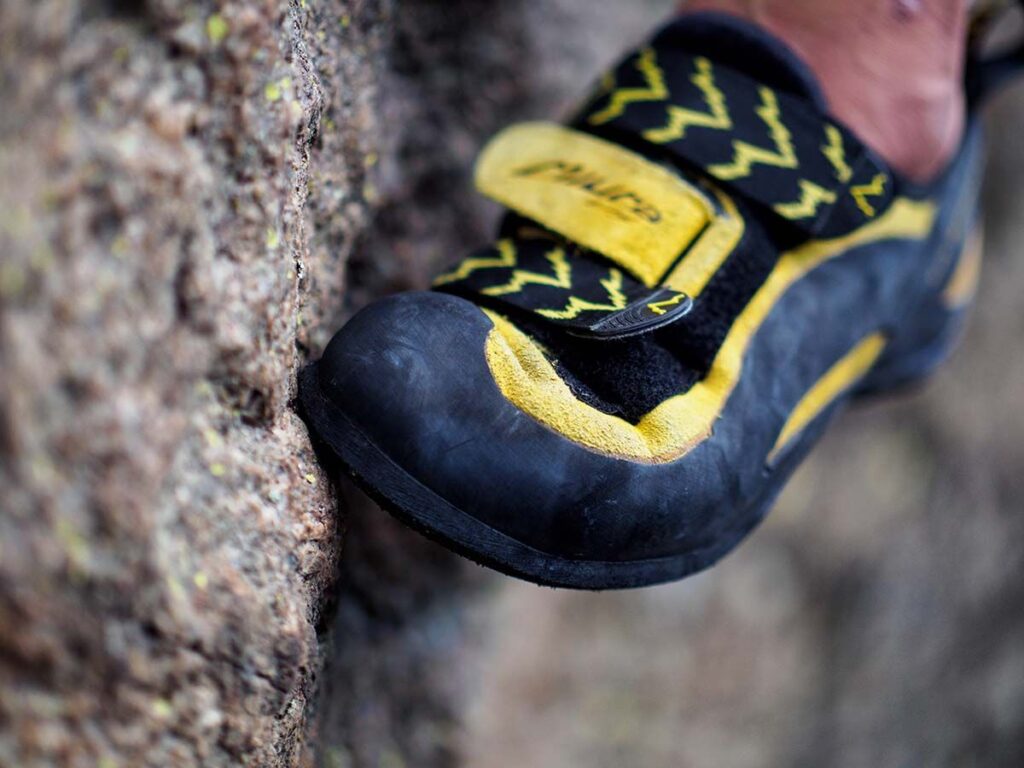
Edging: Finding the Right Balance
Edging involves using the inside or outside edge of your climbing shoe to step on small holds or features.
Inside Edge: The area from your big toe down the side of your climbing shoe.
Outside Edge: The area from your pinky toe down the side of your climbing shoe.
- Most of the time you will find yourself using the Inside Edge because your big toe is the strongest and most nimble part of your foot, giving you the most stability.
- The Outside Edge is more useful for traversing or moving laterally along a wall.
- Tip: It is important to keep your hips close to the wall to maintain balance.
- Tip: Distribute your weight evenly on the edge for stability.
- Tip: Engage your core to support your body’s alignment.
Smearing: Trusting Friction
When it comes to smearing friction is your best friend. The goal is to press the sole of your shoe against the rock or slab to create friction that keeps you stable.
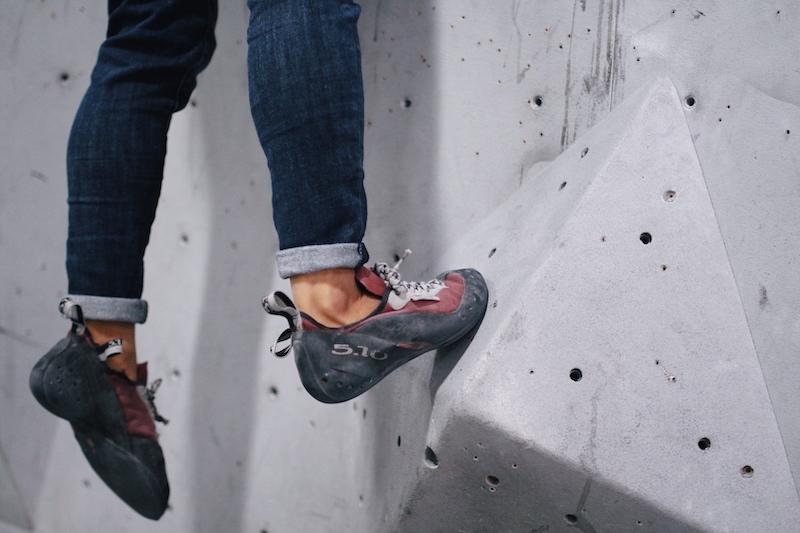
- Tip: When smearing, keep your weight concentrated over your big toe.
- Tip: Position your foot against the rock’s surface with even pressure.
- Tip: Maintain your body’s center of gravity over the smearing foot.
- Tip: Keep your hips close to the wall to avoid sliding away.
- Not sure whether to Edge or Smear? Remember that you can smear an edge, but you can’t edge a smear.
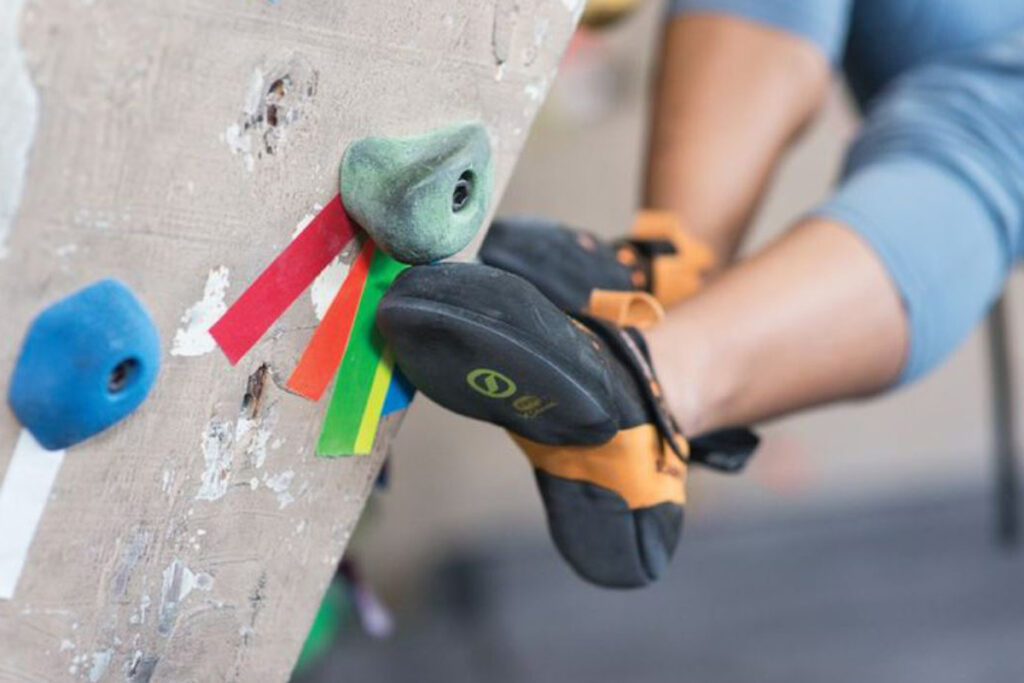
Toe Hook: Utilizing Your Toes
Toe hooking involves using your toes to grip or hook onto holds, providing added stability or pull.
- Identify holds suitable for toe hooking, such as edges or protruding features.
- Tip: Place your toe on the hold and flex your foot to create tension.
- Tip: Use your leg and core strength to maintain the hook.
- Tip: Keep your body close to the wall to prevent losing the hook.
Heel Hook: Utilizing Your Heel
Heel hooking is essential for tackling overhangs. This technique involves hooking the heel over a hold to support your weight. Essentially, it becomes a third hand.
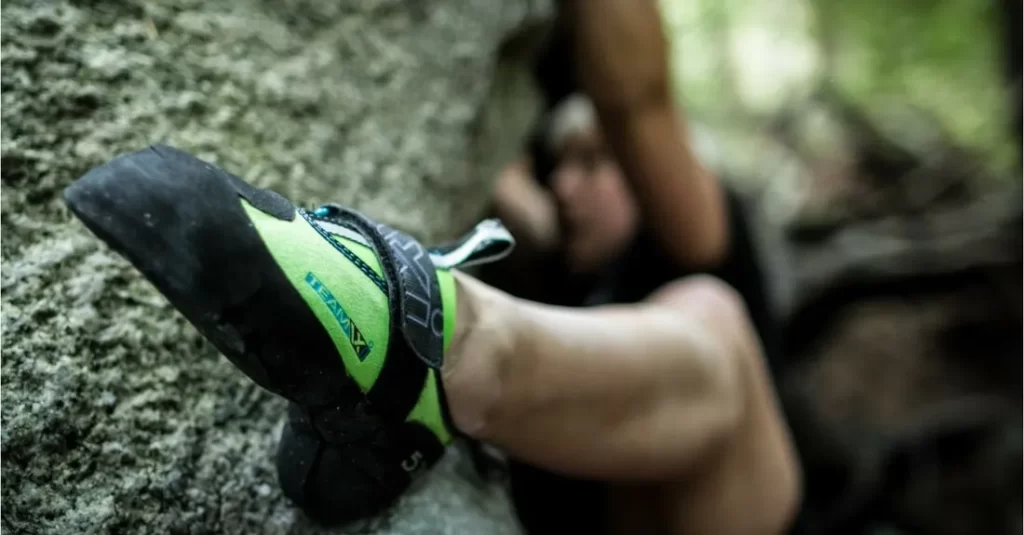
- Identify holds conducive to heel hooking, usually underclings or sloping features.
- Hook your heel over the hold and engage your hamstring and core muscles. Tip: Warm up your hamstrings to avoid injury.
- Tip: Don’t just passively slap your heel onto a hold, it is important to ENGAGE.
- Tip: Use your hands and opposite leg to control your movement and direction.
- Tip: Adjust the angle of your heel hook to find the most comfortable and stable position.
How do you practice good rock climbing footwork?
Practicing good rock climbing footwork requires trial and error. As a beginner climber here are some helpful tips and drills for practicing good rock climbing footwork.
Quiet Feet
Hear a big bang in the rock climbing gym as someone smacks their foot, knee, arm or etc. into the wall? One of the basic footwork drills for beginners is known as Quiet Feet. Try going through basic routes without making a sound. This allows you to focus on precise footwork [precise placement] in-order to prevent yourself from making noise.
Feet Only Ladder
Most if not all bouldering gyms have a climbing route [often found on slab walls] that can be hands free. Essentially you are climbing up the wall like a ladder by only using your feet (hands can touch the wall, but not use the boulders). This requires you to have more precise footwork, practice keeping your hips to the wall, and practicing shifting weight while staying balanced.
Trust your Feet
Find your legs are shaking? This comes from a lack of trust and confidence in your own feet. It isn’t just about being able to use appropriate footwork technique, but also the ability to trust in your feet, shoes, and footholds. It can help just by taking a deep breath and telling yourself that your feet got this.
Movement with Intent
It is important when developing good rock climbing footwork to plan and execute each foot placement deliberately and not as an afterthought. When you’ve found the best hold, we recommend visualizing how your foot will be positioned on it.
It is important to also remember that rock climbing is a sequence of motions. Don’t move your foot until you know exactly where you want it to go and the next step(s) for after you move it [such as next foot placement or handhold].
